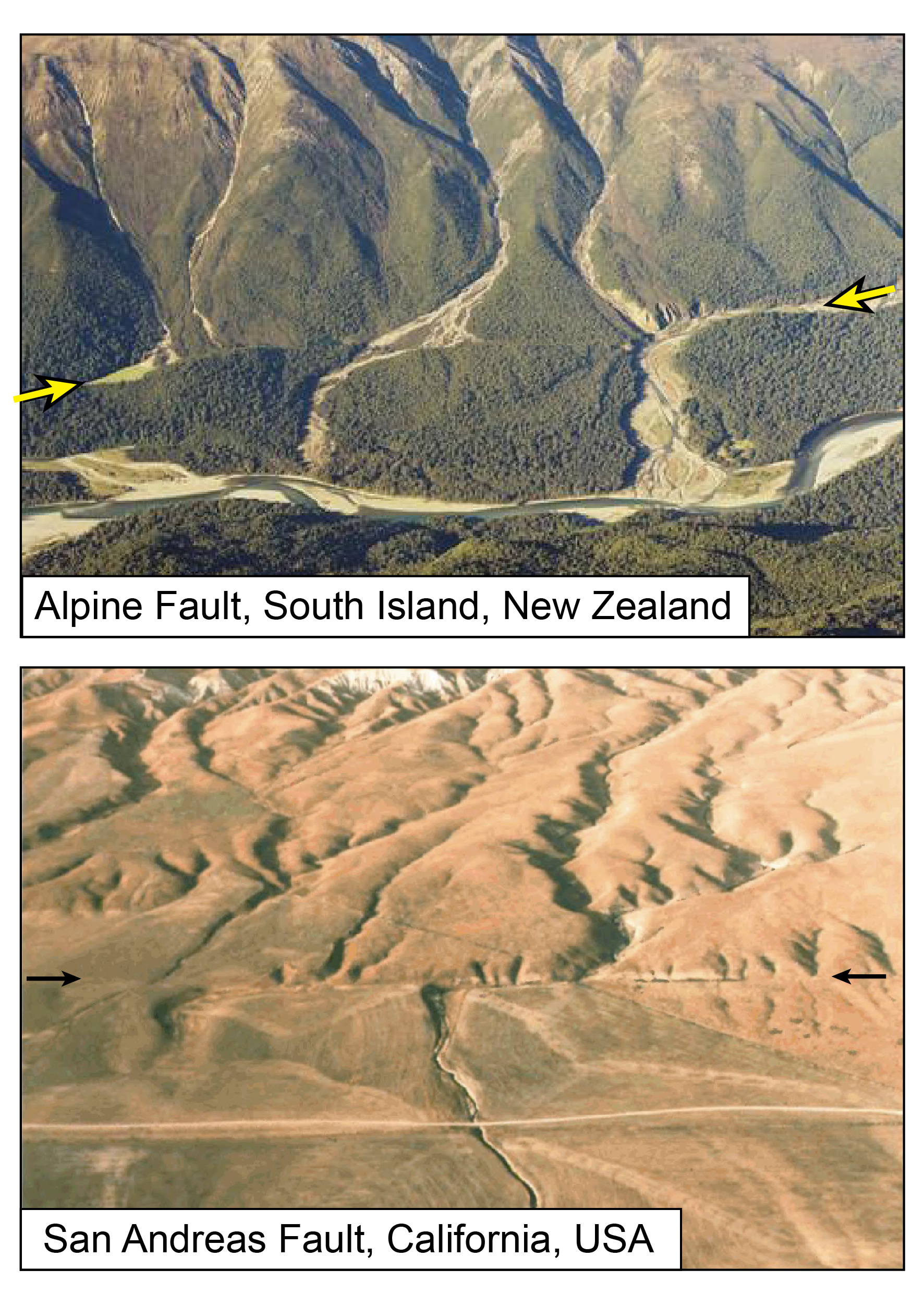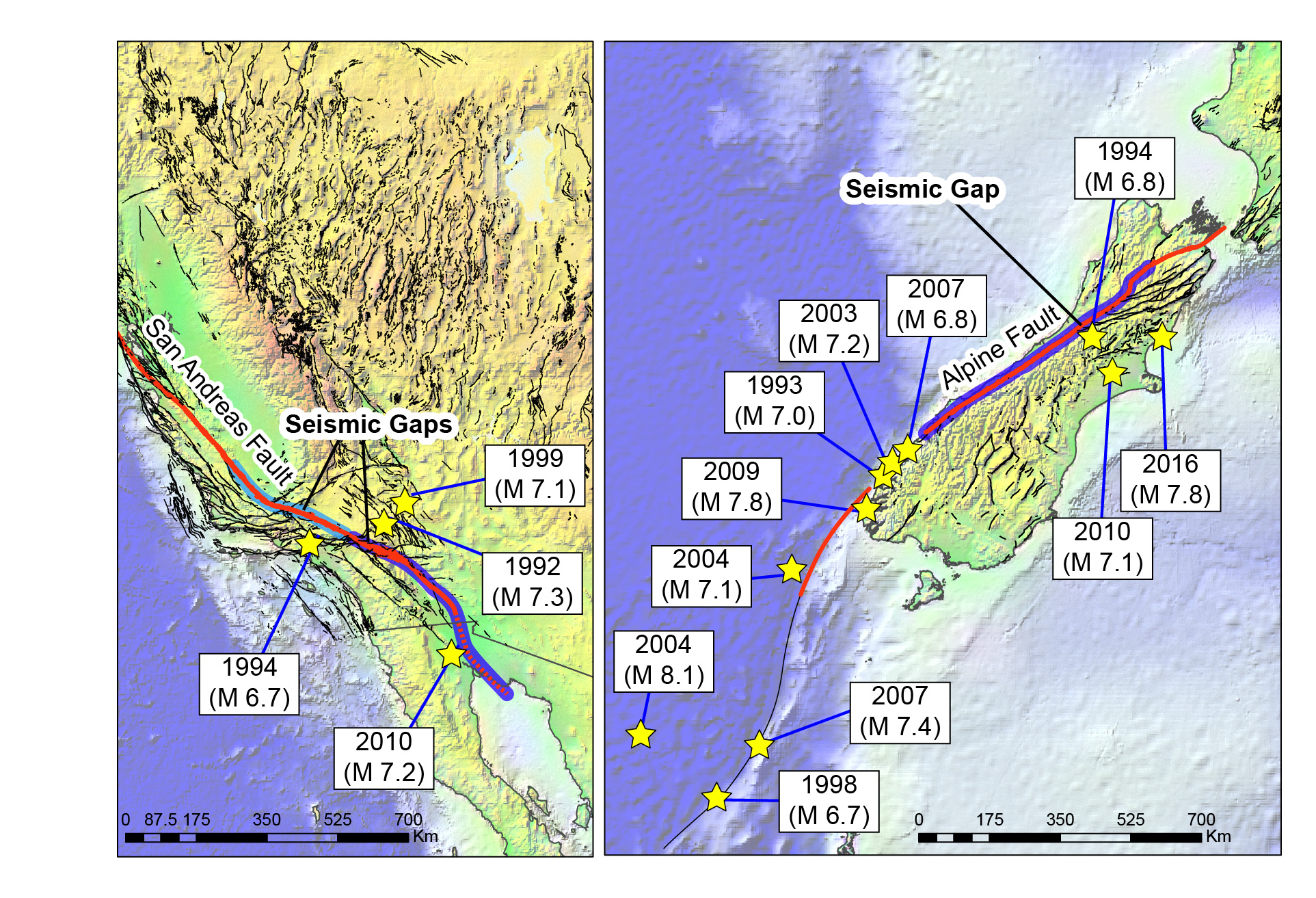The recent powerful quakes that devastated the northeastern coast of New Zealand’s South Island on 14 Nov 2016 may be part of a pattern emerging for large strike-slip fault earthquakes all around the world.
The New Zealand quakes are significant, because they did not occur on the country’s largest plate-boundary fault line, the Alpine Fault. They instead occurred on smaller nearby faults, and this is something that is happening to other such faults, most notably California’s San Andreas Fault.

New Zealand’s Alpine Fault is a 600-kilometre right-lateral strike-slip fault that forms the main boundary between the Australian and Pacific plates. Its plate movements, considered to be fast by global standards, at ≈ 3 centimetres per year, forged and shaped the Southern Alps mountain range.
A great earthquake (≈ M 8.0) return-time was first proposed by Professor William B. Bull from the University of Arizona. From dating slow-growing lichens born along the fault of refreshed free-faces of boulders that had fallen during earthquake-triggered rock-slides, Prof Bull surmised that the four largest quakes in the last 1,000 years had occurred around 998, 1260, 1530, and 1782 AD, with an average “regular” return time of 250 to 270 years (Geological Society of America Bullentin, 1998). The fault would thus presently stand only about 20 years away from the next 250-year mark, which is about the time when the occurrence of the next major earthquake begins to become most likely.
A further trenching study led by Dr Kelvin R. Berryman from GNS Science has now exposed 24 earthquake surface ruptures in the last 8,000 years, with an average return-time of 333 years (Science, 2012). Although this longer, multi-millennial succession is more irregular, GNS Science experts confirmed that a major earthquake along the longest, southern section of the Alpine Fault has a 30% probability of occurring in the next 50 years.

Looking at California’s recent earthquake records, a succession of fairly large, peripheral earthquakes near the San Andreas Fault started about 25 years ago. Since 1990, the southern part of the main 1,300 km-long fault has seen four strong earthquakes; a M 7.3 in Landers in 1992, a M 6.7 in Northridge in 1994, a M 7.1 in Hector Mine in 1999, and a M 7.2 in El Mayor-Cucapah in 2010, all of them located around the main fault. Such a pattern may be interpreted to indicate that a large amount of stress has built up regionally around that master fault, an ominous sign that, with little additional accumulated stress, the occurrence of a great earthquake on southern San Andreas itself is getting closer.
The emergence of clusters of large earthquakes is not a good omen. They include: the recent New Zealand quakes; its smaller (M 7 and 6.1) and more destructive predecessors near Christchurch five years ago; as well as several earthquakes (≈ M 7.2 to 8.1) since 2003 that took place between Macquarie Island and the southern tip of New Zealand. It implies that stress has built up to a near-critical limit next to the southern Alpine Fault. The smaller faults around it are breaking apart first because their resistance to tectonic stress is lower as compared to that of the Alpine "master" Fault. But, eventually, enough stress will soon build up to cause the Alpine Fault to break and we can expect the quake then to be a very large one.
Unfortunately, we do not know when this will happen. It could be next year or 50 years from now. Undoubtedly, however, we are now getting close to that critical time when we can expect a major earthquake to happen there. Scientists need more time to collect more data, even though time-predictability might remain an ever-elusive goal. Man began measuring earthquakes a little over 100 years ago, and locating them adequately little more than 50 years ago. This is not a long enough duration for us to understand earthquake cycles well. We are still guessing. Even if some remarkable patterns are emerging. With more time, we will be able to gather more data to more accurately understand the mechanics of coupled faulting and calculate the probabilities of future earthquakes.
However, rather than focus just on that, it is more pressing that we take precautionary steps now to minimise the damage and loss of lives from a devastating earthquake. This task lies largely on the shoulders of civil engineers and law-makers.